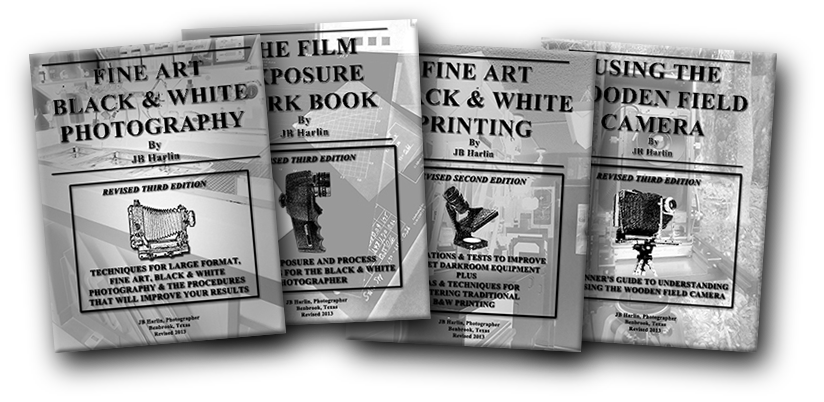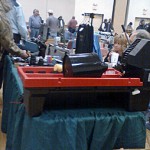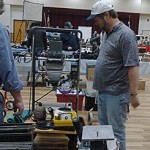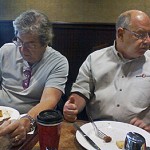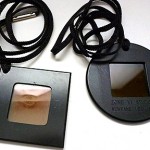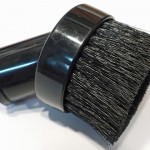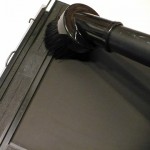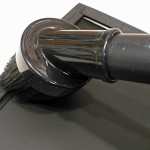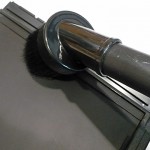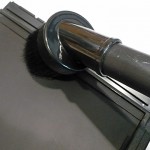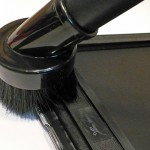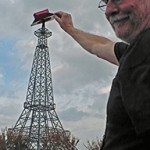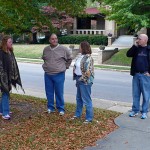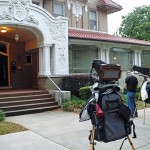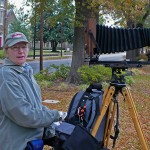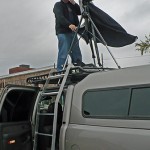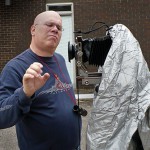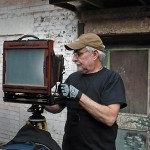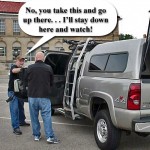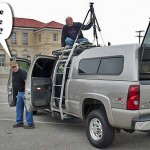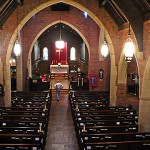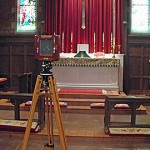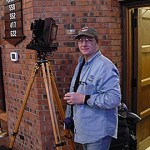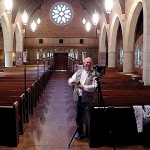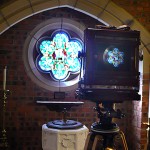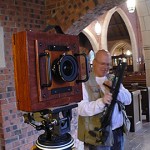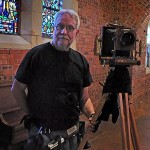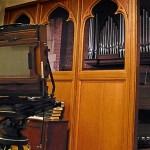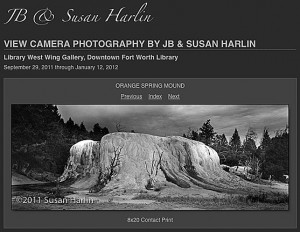MIXING YOUR OWN
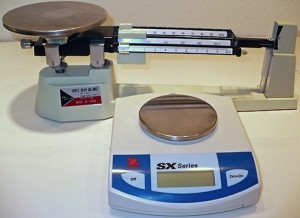 I have always been an advocate of vertical integration. The more you can do yourself, the better control you have of the outcome. For many years I used prepackaged photo chemicals and have never had a problem. But, as the traditional darkroom and the materials used become more and more an alternative process, commercially available photo chemicals are getting harder to find. Some favorite chemicals have vanished. An old favorite, the Zone VI line of print developer, fixer and hypo are now gone from Calumet. I recently witnessed 8 bags of print developer and 2 bags of print and film fixer selling for $127.50 on eBay. That is well over double the original cost from Calumet.
I have always been an advocate of vertical integration. The more you can do yourself, the better control you have of the outcome. For many years I used prepackaged photo chemicals and have never had a problem. But, as the traditional darkroom and the materials used become more and more an alternative process, commercially available photo chemicals are getting harder to find. Some favorite chemicals have vanished. An old favorite, the Zone VI line of print developer, fixer and hypo are now gone from Calumet. I recently witnessed 8 bags of print developer and 2 bags of print and film fixer selling for $127.50 on eBay. That is well over double the original cost from Calumet.
The bottom line is, you can mix your own photo chemicals. Sometimes, if you purchase bulk raw chemicals, you can even save a few dollars. Another plus to mixing your own is the fact that you have 100% control. If something goes wrong, you know who to blame. You can also modify the formula and experiment. Mixing your own photo solutions is not hard. It is not rocket science and you do not have to be a chemist. If you can follow a recipe and bake a cake, you can mix your own chemistry for the B&W darkroom.
The first thing you need to understand is that in order to mix your own photo chemistry you will be handling CHEMICALS. If you are not comfortable with this thought, do not even go there. But, remember that you are surrounded with chemicals. . . the entire planet is made of them. If you take proper precautions and are careful, there is nothing to fear. I am not a chemist, so I have little understanding of deep details and I have even less inclination to study chemistry. Do as I do, assume that everything you handle in the way of raw chemicals are toxic. Do all mixing in a well-ventilated area. Clean up spills immediately. Avoid breathing airborne powders. Always wear gloves and purchase a respirator with proper filter. A little common sense goes a long way.
 As I said before, for me, mixing photo chemicals is nothing less than following a recipe.
As I said before, for me, mixing photo chemicals is nothing less than following a recipe.
When mixing any photo chemistry formula/recipe you need to accurately measure all of the various chemicals. Most formulas call for dry chemicals measured in grams and liquids in milliliters. I have two scales for dry measure. I have a very accurate digital scale for small quantities and an old-fashion triple beam for larger amounts. I picked up a box of small serving containers at the local big box store to be used as disposable containers for measuring small amounts of dry chemicals. I also have larger 8oz plastic cups for larger amounts. Be sure to use the tare function to zero the scale with the empty container before measuring. Zero the scale with every new container, they do not all weigh the same. Once used, I toss them in the trash. I never reuse one of these plastic containers. This assures there is no chance of unwanted contamination.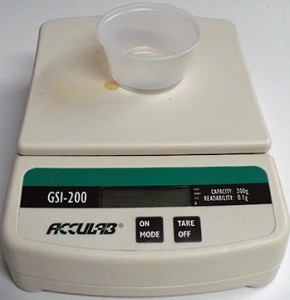
For liquids, I use an appropriate size graduate, and for small quantities, a pipette is the easiest way to make accurate measurements. You can use a pipette pump to make loading and measuring easier, or just dip the pipette into the container and hold your thumb over the end. Remember to always thoroughly wash the pipette after use and always use a clean pipette when going from one chemical container to the next. If the pipette is not properly cleaned, you will cross contaminate your chemicals.
Always follow the chemical formula. Most all formulas are mixed in water and there should be a temperature specified to insure the chemicals dissolve. Always mix in the exact order as called for in the formula. Add each ingredient slowly and continually stir until each is completely dissolved before adding the next. This is where a magnetic stirrer comes in handy. Take your time. Do not rush the process. Some chemicals take some time to completely dissolve.
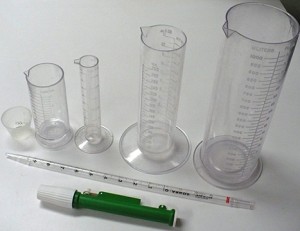 I use distilled water for all stock solutions. I always use distilled water for stock solutions and processing film. Unless your tap water has known problems, it should be fine for mixing printing chemicals.
I use distilled water for all stock solutions. I always use distilled water for stock solutions and processing film. Unless your tap water has known problems, it should be fine for mixing printing chemicals.
Once properly mixed, store each formula in a clean bottle with a plastic cap. Never use metal caps, some chemicals will cause them to rust and contaminate the solution. Brown glass is best for developers and plastic should be fine for most others. Be sure to label each container as to its contents and also include the date mixed. Most all stock chemicals are good for three months, some much longer.
There are many published formulas. Some popular commercial formulas are proprietary, but in many cases there are alternative, similar formulas that are published. By applying a little experimentation, you can tailor your photo mixtures to suit you. Search the Internet for formulas and pick up a copy of “The Darkroom Cookbook” Third Edition by Steve Anchell.
Mixing your own is not that difficult. With a little study, careful handling, forethought and experimentation you can mix your own photo chemistry.
Here is a list of things you will need or may want to have;
• disposable gloves
• respirator
• apron
• a selection of required chemicals
• accurate scales
• disposable plastic cups for weighing chemicals
• several sizes of graduates for liquids
• stirring rod
• magnetic stirrer
• pipette
• pipette pump
• glass storage bottles
• plastic storage bottles
Resources:
Bostic & Sullivan
http://www.bostick-sullivan.com
Artcraft Chemicals Inc.
http://www.artcraftchemicals.com
The Darkroom Cookbook Third Edition by Steve Anchell
http://www.steveanchell.com
Pyrocat HD a semi-compensating, high-definition developer, formulated by Sandy King.
http://www.pyrocat-hd.com
The Book Of Pyro by Gordon Hutchings
JB
D/FW LF GROUP GRAPEVINE CAMERA SHOW OUTING
We had another outing. This time breakfast and a camera show in Grapevine, Texas. Though the show was a little slow this time, you always find something in a box that you just have to go home with. Susan found a Zone VI viewing filter and in the next box I found one of the original square filters from way back in the early days of Fred Picker.
Bob really wanted this Jobo, but I think someone else ended up with it. . . nice! Paul found just what he needed for his new darkroom. . . a nice Beseler 45 with a lot of accessories to boot. Way to go Paul!
THE DAY KODAK DIED. . .
A PLACE TO STAND
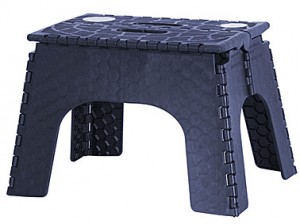 Ever found that once you have your camera in just the right position that you can’t quite see the very top of the ground glass. It is important to get up there so you can see if your foreground is in focus. Never fails, you need just a little more to get a good view. Well, we found a neat accessory that just may save the day for you.
Ever found that once you have your camera in just the right position that you can’t quite see the very top of the ground glass. It is important to get up there so you can see if your foreground is in focus. Never fails, you need just a little more to get a good view. Well, we found a neat accessory that just may save the day for you.
We discovered a nifty little folding step stool at Wal-Mart. We hauled a couple of these with us on our last trip and though I never used mine, Susan found it very helpful with several of her photographic efforts. It was especially useful for her and the pano format cameras she uses. She made use of the step several times when she needed a little height working with difficult setups.
Here is more information from the Wal-Mart web site;
Keep everything within reach with the Mainstays 12″ Folding Step Stool. This skid-resistant step stool gives you an extra boost to reach high shelves or cabinets. It folds down to two inches thick for easy storage.
Mainstays 12″ Folding Step Stool:
Easy to carry
Skid-resistant top and feet
Stands 12″ high
Folds to 2″ thick
Weight capacity: 300 lbs
Folded Size: 13.5″ x 12.5″ x 2″
Weight: 2.5 lbs
Wal-Mart No.: 007126355

This 12″ step folds up and is easily tucked away till you need a little boost. This is another accessory that is a life saver when you need it. We ended up purchasing several of these for use around the house also. You never know what you are going to find when you are out poking around in the stores.
JB
Easy to carry
Skid-resistant top and feet
Stands 12″ high
Folds to 2″ thick
Weight capacity: 300 lbs
Folded Size: 13.5″ x 12.5″ x 2″
Weight: 2.5 lbs
Wal-Mart No.: 007126355

CLEANING FILM HOLDERS
Dust is forever the biggest enemy of the large format shooter. Seems that no matter how meticulous you are, that one little speck of dust sneaks in and plants itself right in the middle of some nice smooth area. . . like the sky. It is a never-ending battle and requires continuous attention.
It is obvious that you need to keep your camera clean and it is imperative that you vacuum out all of your film bags and equipment cases. Dust gets everywhere, and it is good practice to vacuum everything before you go out to photograph. But, there is one area we have found to be extremely important for dust control, and that is keeping your film holders clean.
We have found that a thorough cleaning of every holder just prior to loading film keeps the dust problem to a minimum. If the inside of the holder is clean, then the outside is the only place where dust resides. Realize that the most critical time is before and during exposure. If a dust speck gets on your film after exposure, at least it is no longer a threat for making the dreaded pinhole which leads to the black spot on the print. After exposure, the worst a dust speck can do is possibly scratch the film during handling.
Everyone has their own methods for cleaning and loading film holders, and here are my main concerns and how we prepare our holders for loading. I will begin by saying that every holder is cleaned and inspected just prior to every loading session. Even on the road, we never load a holder with fresh film without cleaning. My biggest concern is dust inside the holder. I want the inside to be as clean, and dust free as possible. No matter how clean your film bags and cameras are, dust will always settle on the outside of the holders. If you thoroughly clean the inside of the holder, you will have a better chance of keeping the film dust free. I begin by cleaning the work surface with a damp towel and after dry I vacuum the area just to be sure. I always use the round brush on the end of the vacuum hose and before attaching I vacuum it well to make sure the bristles are free of dust.
I work each holder individually and begin by vacuuming the entire outer surface of the holder with the dark slide still in place. I pay particular attention to the entire area around the parameter of the holder where the slide meets the holder. I want the exterior of the holder as dust free as possible before I remove the slide.
One area that collects dust is the light trap area. Any dust on the dark slide will be wiped off by the felt in the trap. It is imperative that the dark slide be completely removed and the light trap vacuumed thoroughly. Also, while the dark slide is out of the holder, I vacuum the inside of the holder and the entire parameter, paying special attention to the film hold down and dark slide slots along the sides. I open the loading flap and vacuum under it also. The last thing I do before reinserting the dark slide is vacuum both sides of the slide and inspect it for dust or any possible damage. Each dark slide is removed, one-at-a-time, and always replaced in the same side of the holder. I never mix up slides, they always go back into the same holder and same side. . . always!
Once the holders are cleaned we immediately load them with fresh film and place them into their film bag. It is a good idea to vacuum the film bag before placing newly loaded film holders back inside. This is a good idea, especially if you have been in a particularly dusty area.
This is the ritual we go through every time we load film and we have little problems with dust on our film. Everyone has their own way of doing things and this is the procedure we use when loading film. There are a few things that we have found that greatly improve the odds of keeping your film clean. Remember, the vacuum is your best friend when it comes to dust. See my previous post titled “DUST. . . A Four Letter Word!” for more information.
JB
CALUMET SHUTTER SPEED TESTER LF UPGRADE
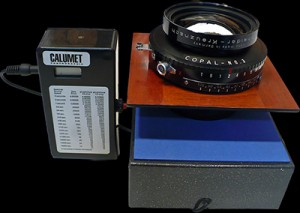 If you are lucky enough to own a Calumet Shutter Speed Tester, you know it is not exactly ideal for testing large lenses and shutters. I have owned one of these handy little devices for over ten years. I performed a modification/upgrade near ten years ago that makes the tester much more suited to testing large lenses and shutters.
If you are lucky enough to own a Calumet Shutter Speed Tester, you know it is not exactly ideal for testing large lenses and shutters. I have owned one of these handy little devices for over ten years. I performed a modification/upgrade near ten years ago that makes the tester much more suited to testing large lenses and shutters.
This modification/upgrade is not difficult, but does require a little ingenuity and proficiency with a soldering iron. With a little planning and a good junk box full of odds and ends you can construct a remote trigger for the tester.
Follow the link HERE to our main web site which will take you to the ‘ARTICLES’ area and scroll down the page to download the PDF titled “CALUMET SHUTTER TESTER MODIFICATION: AN UPGRADE FOR THE LF SHOOTER.” This modification/upgrade has served me well over the years. Hopefully you will find this of interest also.
JB
D/FW LFG IN PARIS. . . TEXAS THAT IS
The D/FW LF Group had one more outing for the 2011 season. This time we headed up to Paris, Texas for a weekend of our usual fun. We met up Friday night at the hotel and prepared for two days of sightseeing and shooting some film. Michael, Janice & Terry, and Susan & I made up the group on this outing. We had a couple others that were not able to make it, but it was still a fun and productive trip.
Susan and I exposed some B&W film and Michael got in his first field test of his new roof-top shooting platform on his truck. Nothing like customizing!
We would like to thank Carolyn and Marcus for their warm hospitality and for arranging and guiding us on a tour of the town. We especially enjoyed the neat places and alleyways around the town. Wish the weather had been a little better. Cloudy is not a problem, but that excessive wind is when shooting LF. Fortunately we were able to find out of the way places and shelter from that south wind in some really great alleys around town.
Two days of really fascinating shooting in a very interesting and scenic town. Again, thanks to everyone in Paris for a great weekend and thanks to Michael for arranging this outing. We anticipate more of these outings beginning early in 2012. Hope to you see you there!
JB
D/FW LF GROUP OUTING SATURDAY OCT 29th
We had another one of our fun outings last Saturday to St. John’s Church in Fort Worth. This was a limited outing and we ended up with only five making the trek, but it was well worth the time. We would like to thank Fr. David for allowing us to have access to his beautiful church. Here are a few snapshots of the group at work.

